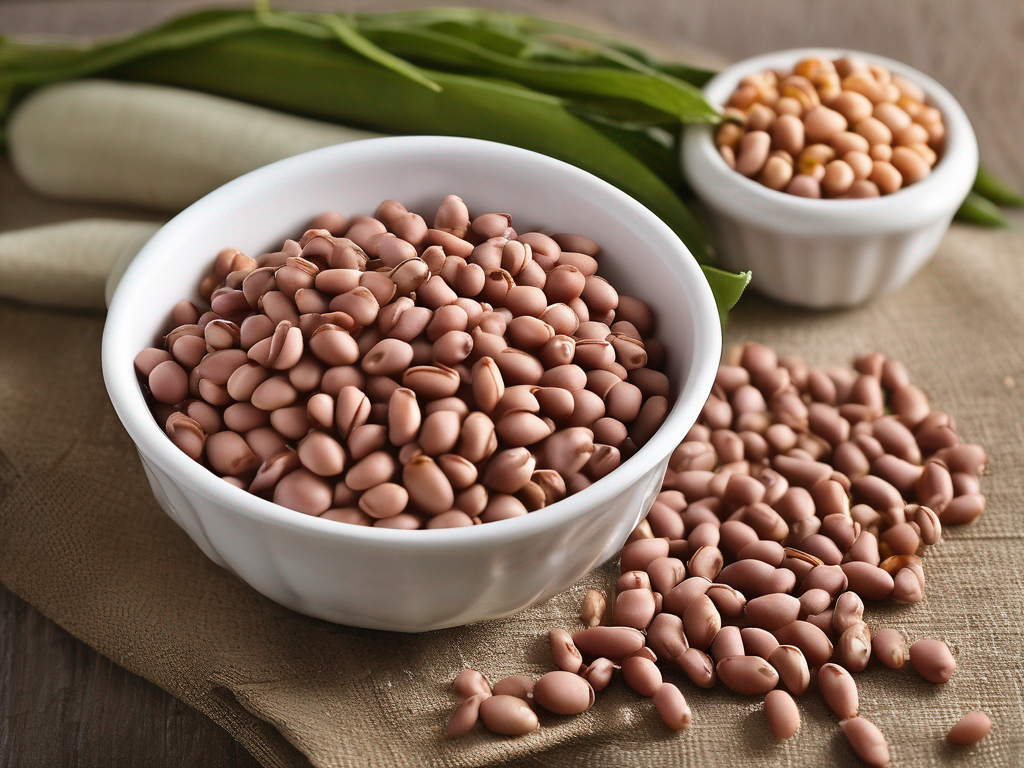
The Ultimate Guide to Properly Storing Cowpea for Extended Shelf Life
Get Your Free Food Safety Cheat Sheet
30 most common foods with instant answers. Print it and stick it on your fridge—completely free!
The Ultimate Guide to Properly Storing Cowpea for Extended Shelf Life
Cowpeas, also known as black-eyed peas, are a versatile and nutritious legume that can be incorporated into a wide variety of dishes. Whether you use them in soups, stews, salads, or as a side dish, proper storage is essential to maintain their freshness and flavor. In this guide, we will explore the best practices for storing cowpeas to extend their shelf life and ensure food safety. (Cowpea)
Why Proper Storage Matters for Cowpeas
Properly storing cowpeas is crucial for several reasons:
- Preserving Freshness: Storing cowpeas correctly helps maintain their texture, flavor, and nutritional value.
- Preventing Spoilage: Improper storage can lead to mold growth, insect infestations, and spoilage, rendering the cowpeas inedible.
- Food Safety: Storing cowpeas in the right conditions reduces the risk of contamination and foodborne illnesses.
Best Practices for Storing Cowpeas
1. Choosing the Right Storage Container
When it comes to storing cowpeas, selecting the right container is key to maintaining their quality and extending their shelf life. Consider the following options:
- Airtight Containers: Use airtight containers to protect cowpeas from moisture, air, and pests.
- Glass Jars or Plastic Containers: Opt for glass jars or BPA-free plastic containers that seal tightly.
- Vacuum Sealed Bags: Vacuum sealing cowpeas can help prolong their freshness by removing excess air.
2. Optimal Storage Conditions
Cowpeas should be stored in a cool, dry, and dark environment to prevent them from spoiling prematurely. Follow these guidelines for optimal storage conditions:
- Temperature: Keep cowpeas in a pantry or cupboard away from heat sources and sunlight.
- Humidity: Store cowpeas in a low-humidity environment to prevent mold growth.
- Light Exposure: Avoid exposing cowpeas to direct sunlight, as it can affect their flavor and nutritional content.
3. Proper Handling and Preparation
Before storing cowpeas, ensure they are clean and free from debris. Follow these steps for proper handling and preparation:
- Inspect for Spoilage: Before storage, check for any signs of mold, discoloration, or insect infestations.
- Rinse and Dry: Rinse cowpeas under running water to remove dirt and debris, then allow them to dry thoroughly before storage.
- Remove Impurities: Discard any discolored, shriveled, or damaged cowpeas before storing the rest.
4. Monitoring and Rotation
To ensure the freshness of cowpeas and prevent waste, practice monitoring and rotation techniques:
- Labeling and Dating: Label storage containers with the date of purchase or expiration to track freshness.
- First In, First Out: Use the oldest cowpeas first to prevent them from sitting in storage for too long.
Conclusion
Properly storing cowpeas is essential for maintaining their quality, flavor, and nutritional value. By following the best practices outlined in this guide, you can extend the shelf life of cowpeas and enjoy their delicious taste in your favorite recipes. Remember to choose the right storage container, maintain optimal storage conditions, handle cowpeas with care, and monitor their freshness regularly. With these tips, you can ensure that your cowpeas stay fresh and safe for consumption.
For more information on cowpeas and other food storage tips, visit cowpea. Stay tuned for more food safety guides and storage recommendations on our blog! (Cowpea)
Related Posts
Here are some other articles you might find helpful:
Authoritative Food Safety References
These agencies and university labs inform every tip and health precaution we publish.
USDA FoodKeeper – Cold Storage Guidelines
Official refrigerator, freezer, and pantry timelines maintained by the U.S. Department of Agriculture.
Visit USDA FoodKeeperFDA Produce Safety Rule & Grower Guidance
Field-to-fridge handling practices that prevent contamination of fruits, vegetables, and leafy greens.
Visit FDA Produce SafetyCDC Foodborne Illness Prevention Hub
Surveillance-backed guidance on pathogens, symptoms, and steps to reduce foodborne illness risk.
Visit CDC Food SafetyUC Davis Postharvest Technology Center
University research detailing optimal storage atmospheres for produce after harvest.
Visit UC Davis PostharvestPenn State Extension – Home Food Preservation & Safety
Peer-reviewed extension bulletins on safe canning, chilling, and reheating practices.
Visit Penn State ExtensionGet Your Free Food Safety Cheat Sheet
30 most common foods with instant answers. Print it and stick it on your fridge—completely free! Want more? Upgrade to the complete guide with 70+ foods.
Scan your food directly and get instant safety info using our AI-powered camera feature.